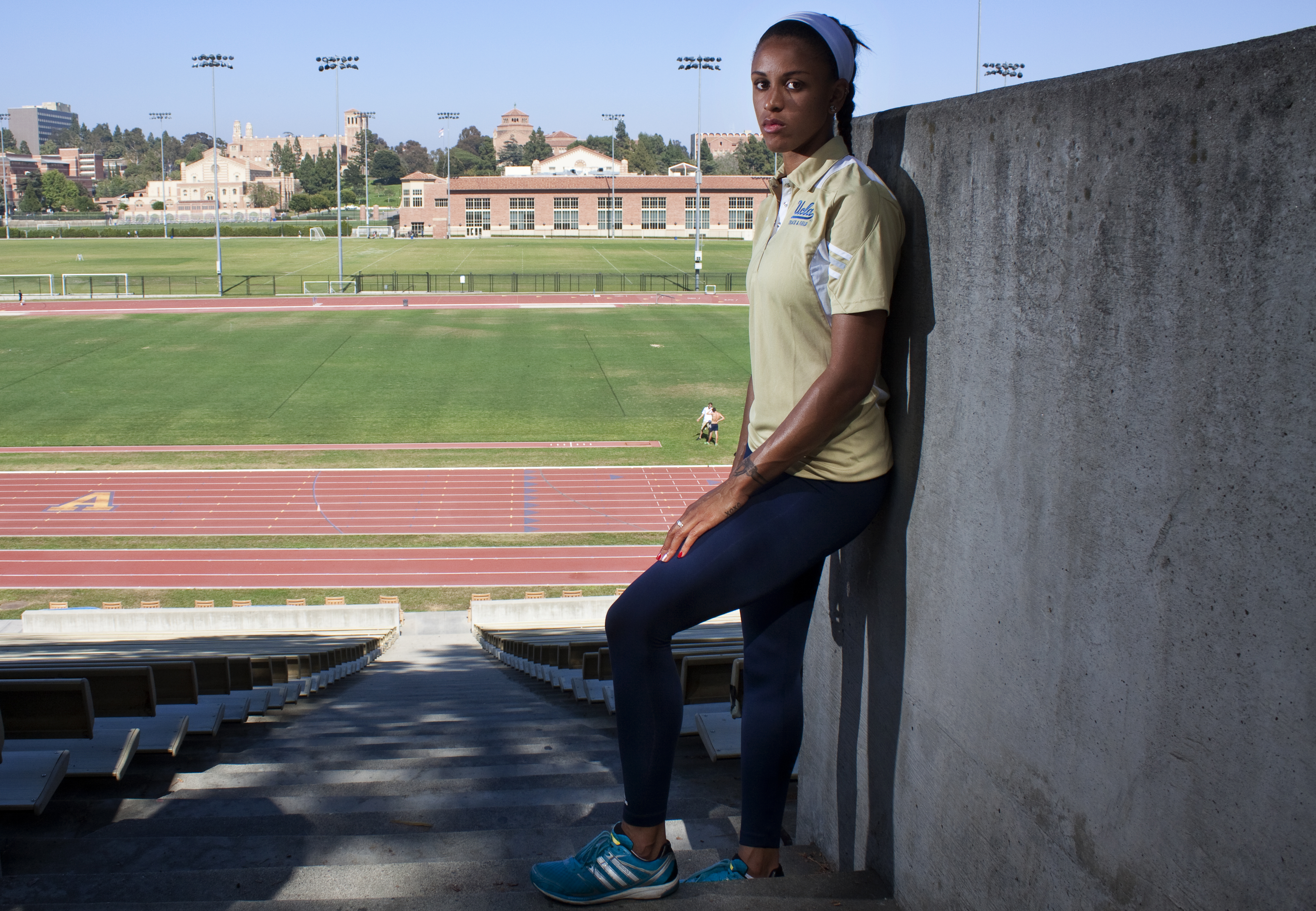Hurdling the Odds: Sickle cell trait poses biggest obstacle in path of three-time NCAA Champion contender

Junior Turquoise Thompson is one of the top hurdlers in the nation despite having inherited the sickle cell trait. Thompson’s red blood cells carry oxygen to her muscles at a less efficient rate than typical blood cells, which has the potential to cause numerous health complications and limits her ability to exert herself while training.
By Leonardo Villalobos
May 30, 2012 1:59 a.m.

Junior hurdler Turquoise Thompson will be participating in her third straight NCAA Championship meet.
Turquoise Thompson didn’t know what was wrong with her body.
Early on in her career, she was constantly suffering from muscle cramps and nagging injuries, and the recurring nature of these ailments was becoming concerning.
Thompson, now a junior hurdler, found her answer while she sat in the locker room one day after her latest encounter with these familiar aches and pains.
Her eyes fell upon the NCAA fact sheet for sickle cell trait; the symptoms on the piece of paper matched up perfectly with the problems Thompson had been experiencing up to that point in her collegiate career.
The sickle cell trait is not an actual illness; it is a genetic condition in which a person inherits a sickle cell gene from a parent.
Although there is no chance of development into a sickle cell disease, having the trait alone can cause serious complications, especially for those taking part in strenuous physical activity.
“When I exercise, it’s so much harder to get oxygen to my muscles because of the way my blood cells are shaped, which means I get fatigued much faster than the regular person,” Thompson said.
“It takes such a toll on my body that I can literally pass out and die during exercise. I can just drop dead if I overexert myself.”
Thompson had largely overlooked the symptoms of the sickle cell trait until her training grew more rigorous in high school and college.
After finally finding the cause of her struggles, the next step for Thompson and her coaching staff was to figure out a way to adapt and make the most out of the condition without putting the collegiate track star in danger.
They realized that communication was the key; not just between Thompson and the coaches, but between Thompson and her body.
“She can’t get away with some of the little things that an athlete without sickle cell could get away with,” said women’s track coach Jeanette Bolden.
“She has to be so much more dedicated to taking care of her body; I think she knows her body a lot and she’s very in tune with what works and what doesn’t.”
For athletes with the sickle cell trait, failing to listen to what their body tells them can put their health at risk or even be life-threatening.
As is commonly the case when it comes to health, simple precautions can prevent serious problems.
Thompson accepts she must pay more attention to detail compared to the average athlete and adjust accordingly to whatever her body tells her.
Perhaps the most important of these matters is proper hydration.
“It’s very difficult; some people can be dehydrated and still go out and run and be fine,” Thompson said.
“If I’m dehydrated and go out and run I’ll get cramps, and those cramps will set me back in training for two or three weeks.”
With the relentless pace of a track season, a two- to three-week setback can prove to be costly and frustrating.
When one mistake in preparation can hinder her performance and improvement for the entire year, Thompson’s training has more at stake than many other athletes’.
Even when healthy, Thompson’s training is commonly limited and overseen carefully.
Long breaks between runs are taken when necessary, back-to-back physically arduous days are avoided and longer warm-ups are given.
While these measures are essential for her safety, there is also a feeling that Thompson could be an even better athlete than she is now if her training were not restrained.
“Realistically, I think she could be better if she didn’t have this condition,” said women’s middle distance track coach Johnny Gray.
“There is certain training we would love to give her to take her to the next level, but because of her condition we just have to play it safe. Then again, I don’t question this; God makes things happen for a reason.”
Whether she was bestowed with this adversity for a reason or not, it’s safe to say that Thompson’s achievements on the track are remarkable by anybody’s standards.
Just last week, Thompson placed second in the 400-meter hurdles at the NCAA preliminary trials, earning herself a bid in the NCAA Championships in Iowa.
With such a debilitating disorder, Bolden believes that Thompson’s religious strength powers her more than blood.
“She has a lot of faith, she’s a very faith-driven person,” Bolden said. “I think her faith really helps her through her condition and keeps her going.”


